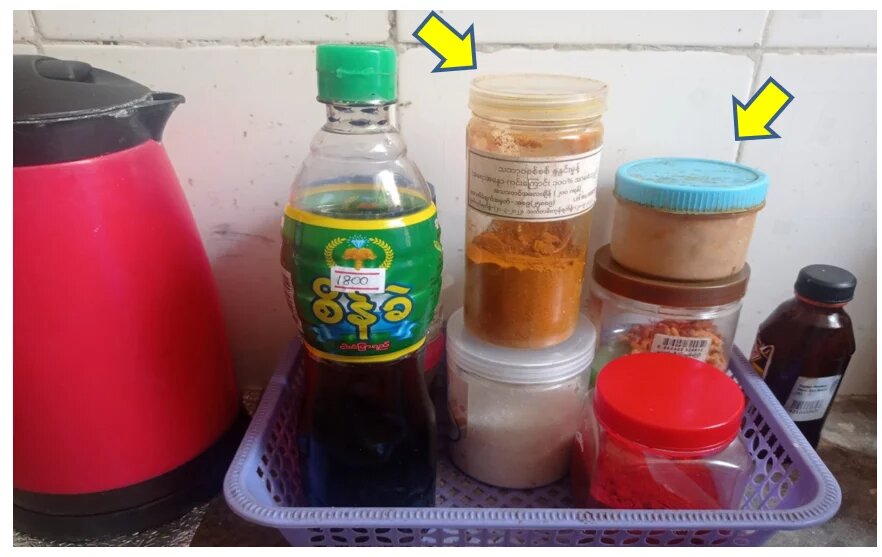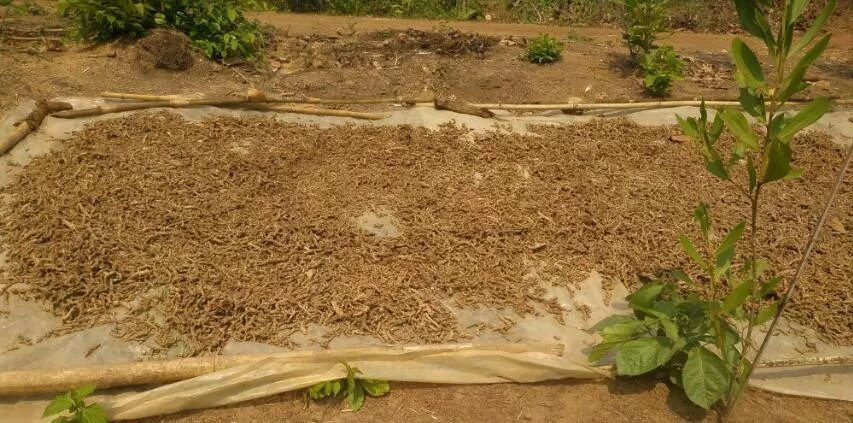
Although turmeric is not on the list of major top ten lists of export crops, it is cultivated in many areas of Myanmar. The question remains, is there a good market for turmeric and can its cultivation support the livelihood of farmers?

Rice and bean are the predominant crops in Myanmar both for local consumption and export. Between 2014 and 2018, the top ten export products from Myanmar were pulses, fish, rice, rubber, maize, livestock, groundnuts, sesame, melons, and onions in descending order. Although turmeric is not on the list of major top ten lists of export crops, it is cultivated in many areas of Myanmar. The question remains, is there a good market for turmeric and can its cultivation support the livelihood of farmers?
Turmeric: Profile and uses
Turmeric (Curcuma longa) is a flowering plant that belongs to the ginger family, Zingiberaceae. Known as Sa-Nwin in Myanmar, it is also known as Yellow Ginger or Indian Saffron. It is grown in beds of soil in 1 to 3 feet wide and 30 to 60 feet long frames. Turmeric can be cultivated in both hilly terrain and flat lands.
Usually, farmers started to plant the crop in April to May and start harvesting in January and February. The crop is grown in different areas of Myanmar including Thandaunggyi (Kayin State), Taungoo (Bago Division), Kyaukse (Mandalay Division), Hin Tha Ta (Ayeyarwady Division), Yangon, Mandalay, and Shan State. According to some estimates, there are over 12,000 acres of turmeric fields across the country, with an estimated production of 100,000 tons per year.
The rhizomes of turmeric are commonly used as a spice in cooking curry. In comparison, turmeric powder is mainly used to make curry’s taste and appearance perfect. In Myanmar, turmeric, powder can be found in almost every household. Local consumption for food preparation is estimated at 3,970 metric tons per year (MOMP, 2014). Turmeric is also widely used in traditional medicine, cosmetics, personal care, food, beverage, and for textiles.
The main active ingredients in turmeric are known as curcuminoids, which contain curcumin, demethoxycurcumin, and bisdemethoxycurcumin. These have been proven to offer significant health benefits including reducing hay fever, depression, cholesterol levels in the blood, and aches and pains. Since turmeric is easily available, it is widely used as a home medicine to cure colds, cough, stomach problems, and skin conditions.
inputs and returns.
According to the Myanmar Department of Consumer Affairs, growing one acre of turmeric costs around 1,000,000 Kyats. One acre can yield approximately 1,000 visses of dried turmeric (1 viss equals 1.65 kilograms), depending on the soil quality, cultivation methods, and inputs. The cultivation costs cover seeds, preparing the soil for growing, labor, medicine, harvesting, etc. Farmers usually get around 750,000 Kyats from cultivating one acre of turmeric.
From raw material to finished product
In terms of added value, processing one viss of dried turmeric rhizome give 0.75 visses of turmeric powder. The first step is the cleaning and boiling of the fresh turmeric rhizomes after harvesting. Then, they are dried under natural sunlight for around 5 to 7 days, depending on the temperature. The dried turmeric is collected for sending to the grinding machine or mill. Farmers have to pay the cost of transportation and also 600 Kyats per viss for grinding. Then the farmers must take the product for packaging and sale to wholesalers and consumers.
The turmeric market situation
The market price for one viss of dried turmeric is approximately 2,500 Kyats at present. In comparison, the price for one viss of turmeric powder is double, around 5,000 Kyats, although this may vary according to the location in Myanmar.
According to the statistics from Myanmar Customs Department, Myanmar exported turmeric to China, India, Bangladesh, Thailand, South Korea, the United States of America (USA), and Europe (EU) as well as to Singapore and markets in the UAE. The EU and USA markets demand organic turmeric products without applying chemical fertilizers, insecticides, or weed control. Myanmar delivered 18,614 metric tons of turmeric to its neighboring countries in the fiscal year 2019-2020, worth over US$ 11.147 million. In the financial year 2020-2021, 13,553.49 metric tons of turmeric were exported, valued at US$ 7.7 million.
Local livelihoods from Turmeric
As Myanmar’s economy is mainly based on agriculture, most farmers don’t have other alternative income sources but depend on farming for their livelihoods. For turmeric as with other crops, cultivating good quality seeds and saplings, good agricultural practices, and systematically harvesting to reduce agricultural waste is essential. This can produce good quality products and increase yield, which may benefit farmers’ livelihoods.
Since there is a good market for turmeric, both domestically and internationally, turmeric farmers need to farm the crop without chemical fertilizers and also set up formal standards (such as Good Agricultural Practice – GAP, International Organization for Standardization-ISO, certified as organic) to access stable and high-end international markets like the EU and USA.
Because the market price of raw materials and the finished product is so different, farmers should continue to add value using improved processing technology and go to the next step, producing high-quality turmeric powder with environmentally friendly packaging to raise the market price. They also need to be provided with market information and to be able to communicate with high-end domestic sellers such as City Mart and Ocean Supercenter, to acquire good prices.
__
This article first published by Mekong Commons on 15 May 2023, as part of the output of "Mekong Commons Online Writeshop" supported by Heinrich-Böll-Stiftung Southeast Asia regional office.
C.Y. is an independent researcher who graduated from the University of Forestry and Environmental Science in Myanmar. She is interested in forestry, agroforestry, socio-economics, ecology, and social development issues. She is also interested in reading and academic writing.
The views expressed in this article are not necessarily those of Heinrich Böll Stiftung.

